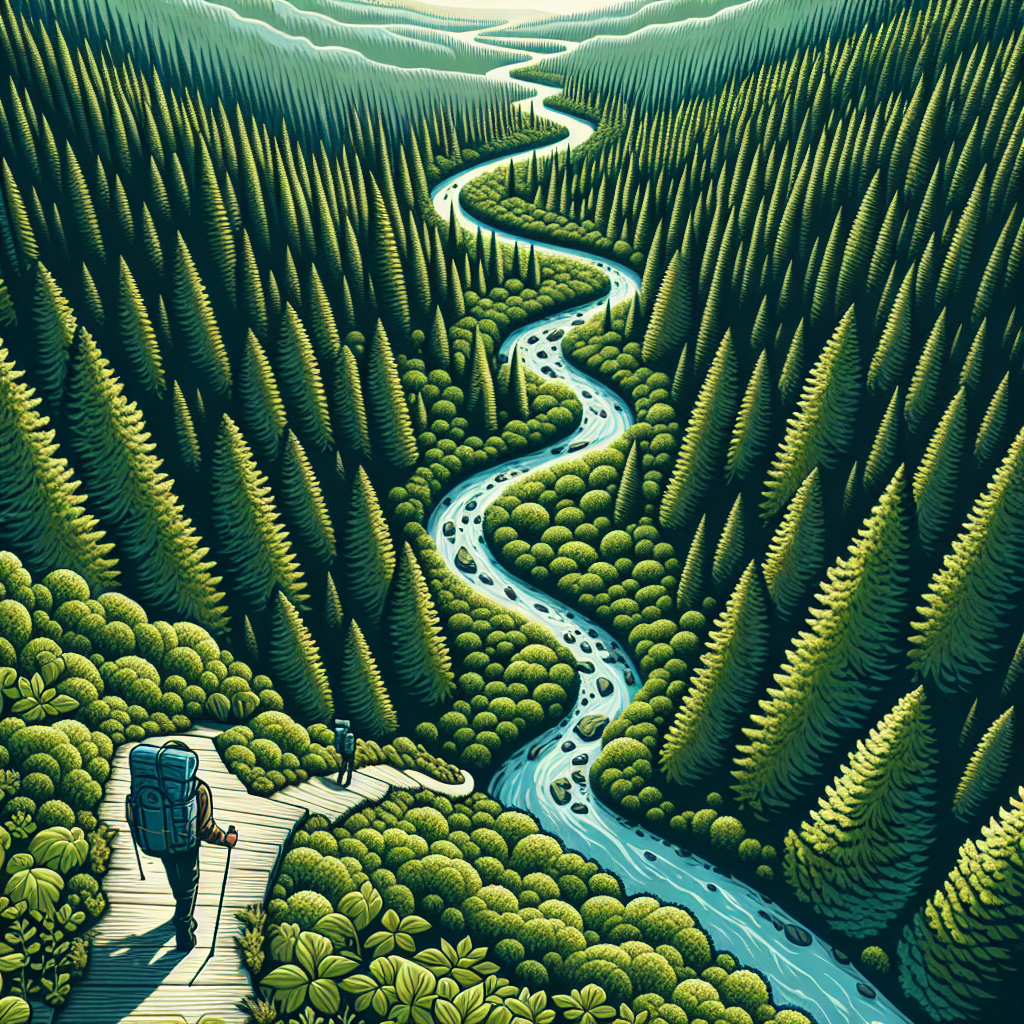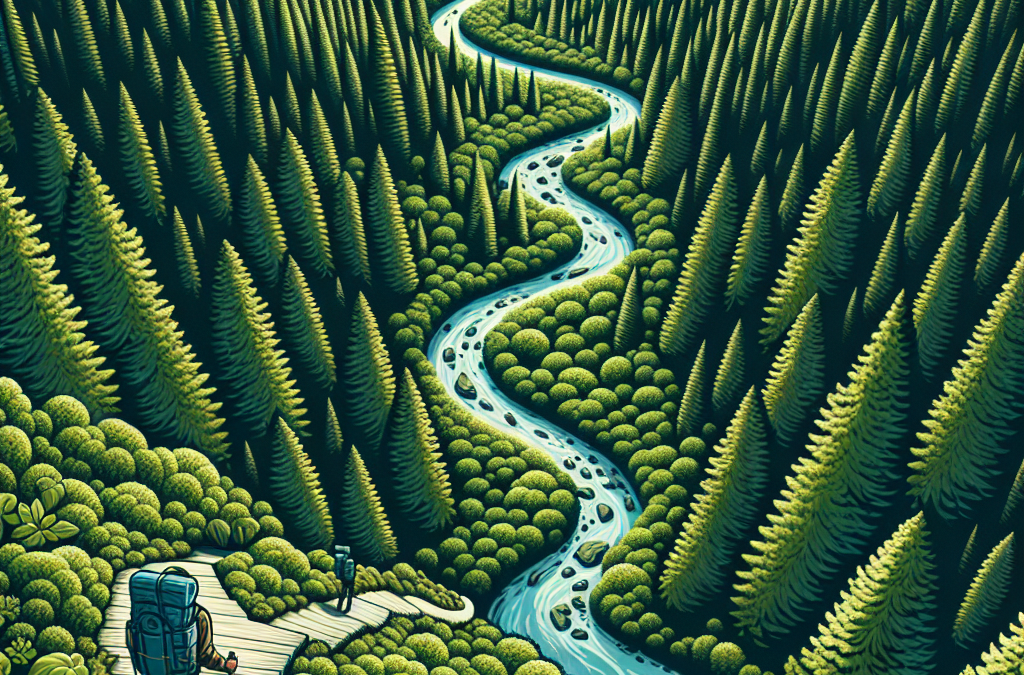You’re about to embark on a thrilling journey into the heart of nature with “Hiking In National Forests: A Guide.” In this enlightening article, you’ll explore an insightful overview of hiking in the country’s national forests, packed with useful tips and tricks that can equip you to traverse the forests like a seasoned explorer. From understanding the necessary gear to valuable security pointers and mapping out the best routes, this guide offers the information needed to confidently step into the wilderness. So, lace up your boots, pack your trail mix, and let’s start this adventure together!

Understanding National Forests
Reconnecting with nature is an essential activity that everyone should regularly engage in. A great way to do this is by exploring the surfaces of our National Forests.
Definition and significance of National Forests
National Forests are beautiful expanses of public lands that are managed and conserved by the Forest Service under the United States Department of Agriculture. They are characterized by dense woods, clear rivers, lush greenery, wildlife, and serene landscapes. The significance of these Forests lies in their ecological value, their contribution to biodiversity, and their recreational sites that offer many outdoor activities, especially hiking.
Differences between National Forests and National Parks
Although both National Forests and National Parks are public lands, they differ in management, regulations, and use. National Parks focus on preservation. You’ll observe park rangers and strict guidelines to guard against altering the landscapes. National Forests, on the other hand, promote multiple uses, including recreation, timber harvesting, and livestock grazing. National Forests offer more recreational freedom; you’ll often encounter fewer crowd and raw, undeveloped land to explore.
How National Forests are conserved and maintained
National Forests are conserved and maintained through a combination of public and privately funded initiatives, wildlife protection policies, controlled burns for undergrowth maintenance, and visitor guidelines to ensure minimal human impact on natural resources.
Planning Your Visit
Before you pull on your hiking boots and pack your backpack, it’s critical to plan your visit thoroughly.
Finding the right National Forest for you
Choosing the right National Forest for your hike depends on your location, fitness level, preferred landscape, and interests. There are numerous National Forests across the country, each offering unique ecosystems, flora, and fauna. Research about the characteristics of each forest, available trails, and time needed for hiking to make an informed choice.
Deciding the best time to visit
When to visit depends on your personal preferences and the specific climate of the National Forest you choose. Fall offers crisp air and colorful foliage, while spring brings blooming flowers and mild temperatures. Summer allows for longer hiking hours, while winter provides peaceful, snowy trails.
Things to note when planning a trip to a National Forest
Thorough planning will ensure a smooth hiking experience. Study the map of the area, learn the rules and regulations, familiarize yourself with trail difficulty levels, double-check your equipment, and assess weather conditions.
Hiking Trail Types
Understanding the types of trails in National Forests is crucial for a fulfilling hike.
Types of trails available in National Forests
Trails range from easy, short routes perfect for beginners and families to strenuous, long-distance trails for experienced hikers. Most National Forests have well-kept trails with signage while some may offer less-maintained, more wilderness-like trails.
How to choose the appropriate trail
Choosing the right trail depends on your fitness level, how much time you have, and your hiking goal. It’s crucial to accurately assess your capabilities to avoid getting stranded or injured.
Differences between short and long trails
Short trails offer quick, easy treks, often leading to beautiful views within a few hours. Long trails require multi-day trekking and provide immersive experiences into wilderness.
Preparing for a Hiking Trip
Preparation is the key to a successful hike.
Personal health and fitness considerations
Ensure you are in a healthy and fit state before embarking on a hike. Build up your endurance gradually if you are new to hiking.
Equipment and gear needed
Well-equipped hikers are safer and more comfortable. Essential hiking gear includes durable footwear, appropriate clothing, a map, a compass, a first-aid kit, a flashlight, a multipurpose tool, and matches or a lighter for emergencies.
Preparing for different weather conditions
Research the weather before you leave. Bring extra clothing layers for colder temperatures, and don’t forget waterproof gear if rain is possible.
Food and water supply requirements
Pack enough food and water for your journey. Always take more than you think you’ll need, especially water, to ensure you remain hydrated.

Safety Measures When Hiking
Staying safe on your hike should be your top priority.
Basic hiking safety tips
Plan your route and let someone know your plans. Stick to the trails, pace yourself, and rest often.
Dealing with wildlife encounters
If you encounter wildlife, maintain a safe distance, and do not feed the animals. Follow all posted advice about wildlife in the area.
Emergency procedures and contacts
Carry a list of emergency contacts, including local ranger stations. Familiarize yourself with basic first aid skills and procedures.
Safety precautions on different terrains
Different terrains require different safety precautions. Rocky trails can be slippery, and exposed trails can pose a risk of lightning during storms. Be cautious and think on your feet.
Respecting Nature and Environment
While we enjoy the beauty of the wilderness, we also bear responsibility for its preservation.
Importance of leaving no trace
follow the Leave No Trace principles to leave the trail as you found it for others to enjoy in the future. Carry out all litter, and never take anything from the trail.
Best practices to minimize environmental impact
Stay on designated trails, camp at specified sites, and respect plant and animal life.
How to respect wildlife
Observe wildlife from a distance. Never feed the animals, as it can upset their natural diet and lead to reliance on human food.
Fire safety when camping
Follow the forest’s rules regarding fires. If fires are permitted, ensure they are fully extinguished before leaving.
Hiking Etiquettes
There’s no shortage of good manners, even in the wilderness.
Trail ethics and manners
Respect other hikers. Step aside to yield to hikers climbing uphill and to larger groups.
Right of way on hiking trails
Typically, hikers heading downhill yield to those climbing uphill. Always yield to horses and pack animals.
Noise control in National Forests
Keep noises to a minimum to allow everyone to enjoy the tranquility of the forest.
Helpful Resources
Having the right resources can greatly enhance your hiking trip.
Important apps and websites for hiking enthusiasts
Technology can be a great aid in your hiking adventure. Apps and websites can offer mapping tools, trail descriptions, and weather forecasts.
Books and guides about hiking in National Forests
There’s much to learn about hiking, and many books and guides offer insightful advice and tips. Whether you’re a beginner or experienced trekker, there’s always more to learn.
Benefits of Hiking in National Forests
Hiking can provide numerous benefits, both physical and mental.
Physical health benefits
Hiking is a great aerobic activity that can improve your cardiovascular health, muscular fitness, bone density, and even your balance.
Mental health benefits
Hiking can boost your mood and reduce stress. Nature has a calming effect that can help alleviate symptoms of anxiety and depression.
Understanding and appreciating nature
Hiking allows you to connect with nature and appreciate its beauty and serenity in a unique and profound way.
Post-Hiking Activities and Tips
Don’t forget to take care of yourself after your hike!
Post-hiking body care
After your hike, be sure to rehydrate, get some rest, and stretch to aid recovery of your muscles and joints.
Documenting and sharing your experience
Take photos and notes during your hike to remember the experience. Sharing your adventure online can inspire others to start their own hiking journey.
Planning your next hiking adventure
Once you catch the hiking bug, you may find that you’re ready to plan your next adventure. Use the knowledge and experience you gained from your previous hikes to help plan future ones. Enjoy the journey of exploring the wonder and beauty of our Nation’s Forests.

